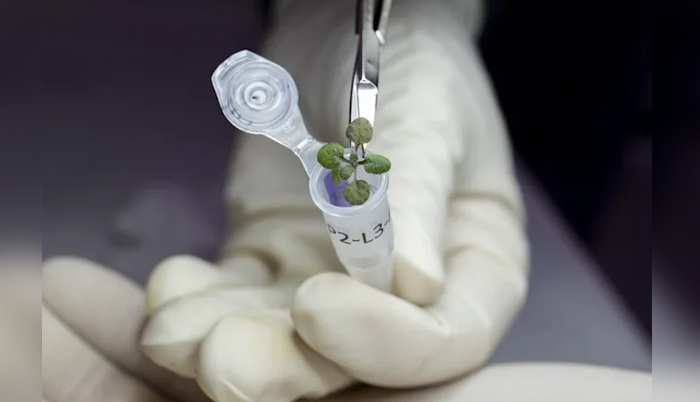![]() Home > Space & Science
Home > Space & Science
Scientists Grow Plants In Soil From The Moon For The First Time

Tyler Jones (UF/IFAS)
![]() May 14th, 2022 | 11:28 AM |
May 14th, 2022 | 11:28 AM | ![]() 461 views
461 views
FLORIDA
The University of Florida researchers only had 12 grams of 'lunar regolith' to work with.
Scientists from the University of Florida have completed a world (and lunar) first by growing plants in soil from the Moon. The researchers used samples obtained by the Apollo 11, 12 and 17 missions, but they didn't have much to work with.
While a total of 842 pounds (382 kilograms) of soil and rocks has been brought back to Earth from the Moon, the researchers received just 12 grams of so-called "lunar regolith" from NASA. Still, that was more than the four grams they requested. Scientists Rob Ferl and Anna-Lisa Paul had to be patient to get their hands on the soil as well — they applied three times over 11 years for the samples.
The team used thimble-sized wells in plastic plates, which are typically used to culture cells, as pots. The scientists placed a gram of soil into each of these, added a nutrient solution and then placed a few thale cress (Arabidopsis thaliana) seeds. They planted the seeds in other types of soil as part of a control group, including simulated Martian soil, soils from extreme environments and a substance that mimics lunar soil.
Nearly all of the seeds planted in the lunar regolith sprouted, but the plants eventually showed some differences from the ones grown in the control group. Some of the Moon dirt plants grew slower or were smaller. There was more variation in sizes than with the control group cress as well.
The scientists, who published their research in the journal Communications Biology, found that differences in the makeup of the lunar soil samples appear to have impacted the growth of the plants. They determined the cress that struggled the most was grown in what's known as mature lunar soil, which is exposed to more cosmic wind.
In particular, as The Guardian notes, samples from Apollo 11 were deemed the least effective for growing plants. Those were obtained from the older surface of the Sea of Tranquility, which had a couple of billion years more exposure to the environment. The researchers wrote that "further characterization and optimization would be required before regolith can be considered a routine in situ resource, particularly in locations where the regolith is highly mature."
Still, the success of the experiment paves the way for the possibility of growing plants on the Moon for food and oxygen, ahead of NASA's Artemis Program taking humans back to the lunar surface for the first time since 1972. “Artemis will require a better understanding of how to grow plants in space,” Ferl, one of the paper's authors and a distinguished professor of horticultural sciences in the UF Institute of Food and Agricultural Sciences, said.
Source:
courtesy of ENGADGET
by Kris Holt
If you have any stories or news that you would like to share with the global online community, please feel free to share it with us by contacting us directly at [email protected]